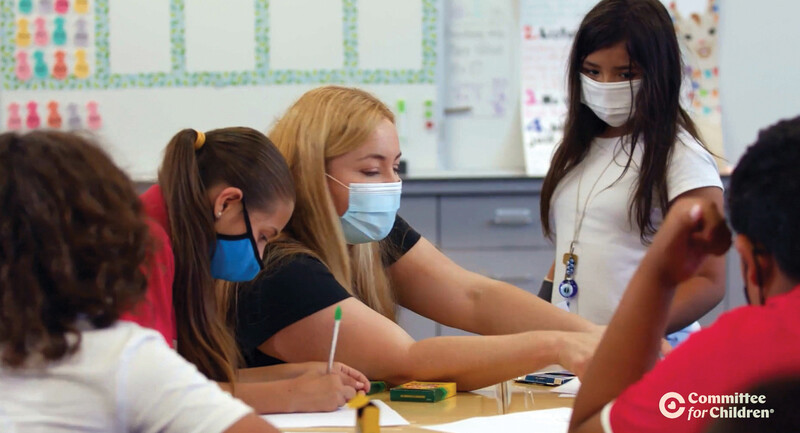Thomas King, one of my favorite storytellers, once said that, "The truth about stories is that that's all we are" (2003, p. 2). This statement has become a guiding force in my teaching career and is especially salient in setting the tone for a new community of learners.
Whether I'm teaching across the core subjects for 2nd grade or focused on 10th grade science ''(and I've done both), stories are at the root of my teaching. My first introduction of myself to new students involves a short story about me in middle school: chubby, hiding behind my hair, and terrified of the teacher calling on me because I constantly turned bright red. I can see the nervousness evaporate as my students realize I won't put them on the spot that day. My vulnerability helps establish a sense of safety because they realize that I understand what it's like to feel anxious.
In the next few weeks of school, I portray myself as a curious learner, a foolish scatterbrain, a thoughtful idealist, an obsessive reader, and a vulnerable fellow human being, all through the personal stories I tell. Sometimes my stories are planned; during a personal memoir unit, I share about sneaking out for ice cream lunches with my dad. Other times my stories are spontaneous, such as when I locked my keys in my house or when I saw a spectacular sunrise on the way to school. The stories don't have to be long, nor do they all explicitly link to curricular content. By telling stories, I offer a way to know me better, and students always respond with their rapt attention and, gradually, their trust.
I'm not going to pretend that stories are an instant cure-all for every difficult classroom situation, but if I view teaching as establishing long-term relationships with my students, then stories definitely help. My stories are an invitation to students to follow my model and take a risk and share about themselves, too. This means that I intentionally listen to the stories they are willing to tell me, whether written in journals, blurted out in the middle of class discussions, or shared after school when the room is empty. I try to be an "exquisite listener" who shows students they are valued and that their sharing means something to me (Tomlinson, 2014, p. 90). Prioritizing listening sometimes means postponing pressing jobs, but I have always found that these relationships are worth the investment, especially when looking at classroom management and the overall positive tone of our classroom communities.
Stories cross cultural boundaries, and oral storytelling is an important part of many Indigenous cultures (King, 2003). Stories hold a compelling universality in addition to the multiple interpretations they encourage. I have seldom met a student who doesn't laugh when I climb up on a desk to act out painting the garage with my grandma or who can't identify with me when I describe being kicked out of the car for fighting with my brothers. Although we can and should understand our differences, stories can serve to create a cohesive community, which allows us to grapple with difficult ideas together.
The truth about stories? I agree with Thomas King. That's all we are. Although we hope that our students remember some of the skills and critical thinking we encourage in our lesson plans, I think it's likely that what they'll remember 20 years later are the stories and that someone cared enough to listen.
Just be mindful that when you tell a story, it may be repeated. Someday in a parent–teacher conference you just might hear, "Oh, you're the teacher who thinks you can eat ice cream instead of a proper lunch!"







